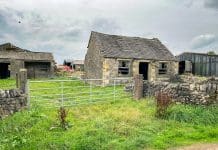Councillor Ken Browse, Chair of the National Association of Local Councils (NALC) outlines concerns arising from the NPPF, and why we need a planning framework for communities…
Undoubtedly the coalition government sees the reform of the planning system as a key driver of economic growth. In other words ‘reducing all that red tape and bureaucracy’ from previous planning policies, which according to the government hampered development and therefore stifled the economy.
So the present National Planning Policy Framework (NPPF) in a ‘bonfire of guidance’ reduces it from 1,000 pages to just 50. But once the framework went live in March 2012, the serious business of planning began. The country needs a huge effort at a local level to get plans in place that properly reflect the integration of social, economic and environmental goals, and protect places people value.
So what does NALC think the impact of the NPPF has been on local (parish and town) councils and communities?
Firstly, NALC is a key supporter of neighbourhood planning which revolutionised the way local councils and communities can shape and design the future of their places.
We also support the broad thrust of the NPPF, in that the rationalisation of government planning policy statements and guidance notes to form a single consolidated document is in principle a good idea, and we think this should render the process of understanding planning simpler and more open.
However, NALC believes the NPPF has not functioned effectively in many parished areas since its introduction. We remain concerned about the ability of planning authorities to determine planning applications that reflect the opinion of local councils without fear of developers winning applications on appeal, and planning authorities being awarded considerable costs against them.
Furthermore, we think there is too much focus on meeting housing targets and not enough focus on the quality of developments or on the mix of housing. It should be made mandatory to consult and engage with local councils in advance of submitting an energy-related planning application.
Local planning authorities should be particularly mindful of the need to support infrastructure requirements identified in adopted neighbourhood plans. We strongly encourage local councils and neighbourhood forums that have an adopted neighbourhood plan to request from their local planning authorities a share of infrastructure proceeds from Section 106 agreements or the Community Infrastructure Levy. We encourage local planning authorities to give full consideration to such requests.
We recommend that the government revoke its decision to limit to five the number of planning obligations that can contribute to a single piece of infrastructure until the proposed 2015 review of the Community Infrastructure Levy has taken place. In the meantime, local authorities should have a free choice between the use of the Community Infrastructure Levy and Section 106 agreements for the funding of infrastructure.
We call on local government (including local councils), the property industries and the voluntary sector to work together to produce a new ‘planning users concordat’ setting out the respective responsibilities of each group.
Regarding the operational impact of the NPPF on town centres – the original document stated being concerned with the views of communities – our experience is that developers have been delivering as little community infrastructure as they can, and we remain concerned there is no actual sanction or community recourse.
Developers in town centres need to better consider the impact of their plans on communities, to understand the demography, infrastructure, amenities and workings of town centres. House builders need to model communities on the people living where development is taking place to test the impact of their plans and intentions. It seems that not enough of this activity has been happening on the ground by developers.
Our view on the operational impact of the NPPF on energy (non-major infrastructure) planning in parished areas, is it should be a mandatory requirement for the applicant to consult with all locally affected parishes/wards in advance of submitting a planning application, particularly in the case of wind turbines because the impact is far reaching.
We see the NPPF as a real test of the government’s credentials, in that national targets of development and house building continually ride roughshod over the needs and demands of local communities and councils. We believe that the government should be putting more pressure on local planning authorities to protect their communities against the threat of undesirable development by moving quickly to get an adopted local plan in place that fits alongside communities’ neighbourhood plans.
Councillor Ken Browse
Chair
National Association of Local Councils
Tel: 020 7637 1865
nalc@nalc.gov.uk














